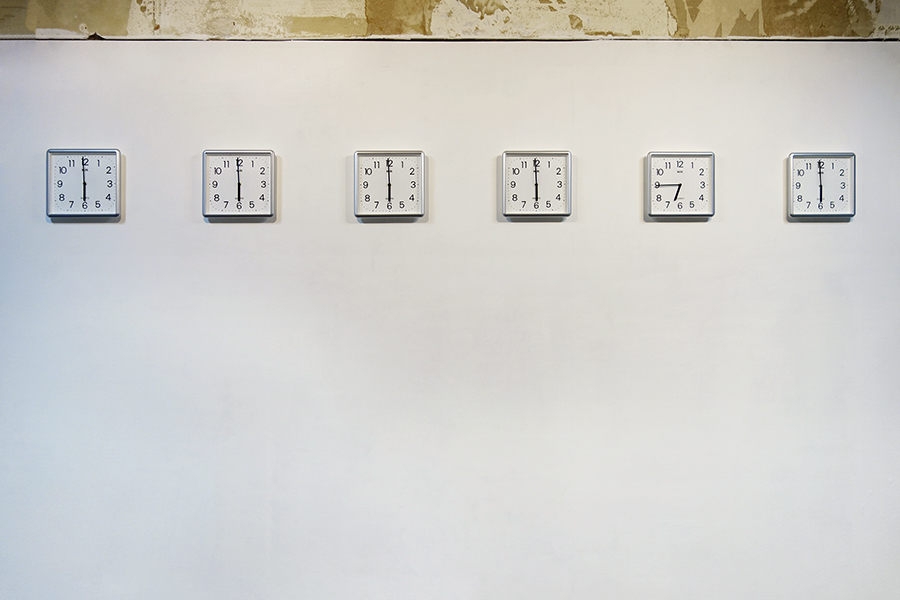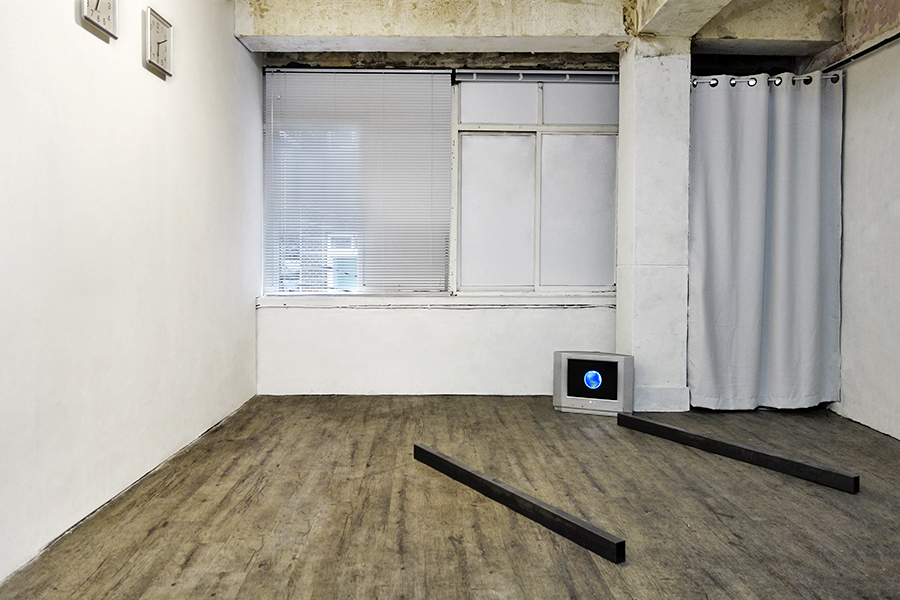Shows
KIGOJA Standard Time (KST)


Six clocks, a TV displaying a spinning globe, two metal bars that appear to be rails cut off from a railroad, and an open window. At first glance, Morgan Wong’s solo show at KIGOJA art space in Seoul seems to be the latest iteration of works borne of his obsession with time—time as parameter, time as system, and time as divestment. There is a certain insufficiency to labeling Wong’s works in such declarative ways; yet doing so provides the viewer a certain utility in distinguishing what aspect of time the artist might be addressing. If one were to put a label on Wong’s solo exhibitions in such a way, it might read: time (or, more aptly, standardized time) as farce.
To understand this, the viewer must expect something more concrete than the meditative quality that critics and curators tend to focus on in Wong’s work. This poses a veritable challenge, as his work possesses a preternaturally hypnotizing quality in how it’s consumed. While a quick survey of his installations at KIGOJA is underwhelming, a closer look, a cue into some detail or context, invests the viewer into the works’ intended experience. What initially seems a play on the mundane or perhaps even contrived can suddenly become invested with meaning; furthermore, the deliberateness and orchestration of everything, including the arrangement of individual installations down to the tiniest details, is deeply felt in the viewer’s experience. This hypnotic submersion, by way of a sense of completeness, is, however, distracting in Wong’s latest exhibition. Retrospective contemplation elucidates Wong’s intention of not wasting the viewers’ experience on submerging them into the work, but instead prescribing them to its subversion.

When viewers finally do arrive at KIGOJA for their reservation, they must navigate four installations. Another World Clock (all works 2016) presents six clocks: five set to display the local standard time in South Korea, and one set 45 minutes ahead at the fictional KIGOJA Standard Time. It isn’t until viewers notice the aberrant clock that they are reminded of Wong’s new standardized time. Meanwhile, Untitled (Opened Window with Blind) is an installation that could easily be missed; the blind on a window of the gallery is the only detail of this installation that calls attention to itself. Distinct from a shuttered window, the blind draws attention to the ways in which material borders attempt to mute the dissonance of their contrived nature. What constitutes a border between time zones? Any answer feels like a farce. Another work, Standard Gauge (1435 millimeters), which feature two railway gauges placed on the floor, anchors not just the show but also the gallery itself, by pushing viewers to contemplate the historical and material implications of these objects being standard to both North and South Korea. Finally, The Night I Couldn’t Fall Asleep presents an animated globe spinning on a television screen in what appears to be a non-uniform, non-stop loop. The video turns out to be a recording of Wong using his thumb to spin an image of a globe on his touch-screen phone. This imprecise, human repetition seems an absurd reclamation of temporality in relation to the cycle of solar time.

Taken individually, there is nothing about these installations that hasn’t already been stated by critics, curators or the artist himself. However, experiencing their orchestration at KIGOJA somehow creates a calculated viewing experience that is much greater than the sum of its parts. The viewer’s experience is not hypnotic or transcendental, but instead one in which time evolves beyond our assumptions of what it is—or, to paraphrase the artist, where time becomes more vital.
“KIGOJA Standard Time (KST)” is on view at KIGOJA, Seoul, until April 16, 2016.







